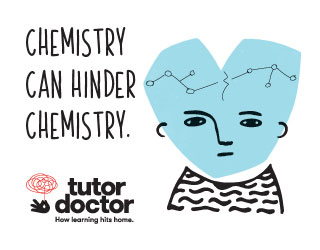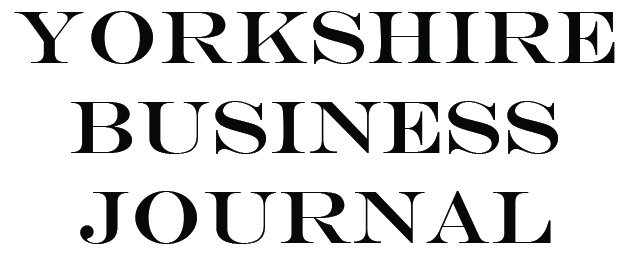Applelec

Supplier of bespoke sign, display and LED lighting products
Name: Carl Eastwood
Website: https://www.applelec.co.uk/
Position in the company: Commercial Director
Years with the company: 19 years
Number of employees: 84 (could drop slightly below 80 or above 84 as some work is seasonal)
Yearly revenue: £7mln (2019)
How did you make the transition from being a metal fabricator, to currently trading as a manufacturer of bespoke signage, display and lighting products?
The two founders of Applelec, Ian Drinkwater and Paul Stothers were offering general metal fabrication. Ian identified a niche whereby the same machinery could be used in another industry where metal fabrication was required, this was the sign industry, where sign companies were coming to us to create signs out of metal using our general metal fabrication machines and skillset; the gap was identified.
Where is your most iconic sign displayed in the world?
The Bibis Italian restaurant in Leeds won the coveted ‘Sign of the year’ award in 2004 for the striking sign above the door. We made the sign in conjunction with a company based in Leeds called Ashleigh Signs. Ashleigh Signs dealt directly with the client and Applelec acted as a trade supplier, working behind the scene.
Who are your main clients and which are your most profitable countries?
In 2003 the LED phenomenon hit, in starting to replace inefficient lighting technology like neon. Applelec embraced the LEDs and started to populate LEDs inside its metal letters, this remains a solid base for us in the sign industry today.
We then brought in a new product in 2008 called LED light sheet, which is used in light boxes and metal display frames. But organically clients started asking for the light sheet only, and not the metal, so we started to supply the LED Light Sheets outside of the sign industry to interior fit out companies; on tracking, the light sheets were placed into high end retail brand applications.
We diversified from signage to using lighting to back light, and we started to get numerous requests as the result of attending conferences and exhibitions, primarily in London. We have a showroom called ‘The Pointe’ at the Business Design Centre in Islington. The Pointe’s objective is to showcase and present the latest technology to architects and specifiers in London and across the world.
We supply our products across the UK, Ireland, and Western Europe. We have also recently started to collaborate with sales agents in order to expand our operations into the Middle East.
I guess repeated business is difficult in your industry, how do you go about chasing new clients?
For the signage industry our offering is a signage manufacturing service where repeat business is never guaranteed due to competition and seasonal demands. All work revolves around price, but when seasonal trends are in force, demand outweighs industry supply and you get the work.
If a business opens and the sign isn’t installed, it doesn’t look good; ironically, the sign’s design and sourcing is often the last part! In most cases we work on very tight deadlines and with a quick turnaround. We do boast repeat business as we have been successful for over 20 years, new business however usually comes from people changing jobs within the industry, or looking for alternative suppliers, or because they have been let down by their existing trade supplier. Word of mouth referrals remain are a powerful marketing and sales aid for the company.
If you were looking for partnerships, collaborations and/or joint ventures which companies or industries would you tend to target?
We have done two joint-ventures and currently looking at a third. We tend to have individuals who really know a market better than we do and take one of our existing products with some adaptation for market fit. A good example is our Applelec Yacht joint venture business, here we see our signage being installed onto luxury yachts, where the signage modifications revolved around saltwater ingress and corrosion. We are always looking for joint-ventures, collaborations, and new product ideas.
What do you feel is the biggest strength of your company right now?
A combination between the great employees, offering great products through innovation, oh and keeping promises aided by great procedures.
How is the business success measured (personally)?
As Commercial Director, we look at elements like turnover and growth margins, coupled with this are conversion rates, and retuning versus lapsed customers as our success measurement. In sales we use the software ‘Hubspot’ to track opportunities, we are just updating all our mainframe with regards to CRM and MIS systems, to a state of the art ERP (Enterprise Resource Planning), keeping at the forefront of technology for managing information we believe is key to success.
I think the salient KPI to success for production would be service levels, elements of delivery, and timings. On the front end we have KPIs and we recently started to bring in a balanced scorecard mentality (a balanced scorecard is a performance tool used to identify, control and thus improve company functions and results).
How can you further add value to the company?
We have been introducing new product development teams, I am excited to see the results! We have balanced scorecards to look at new initiatives on the front end.
Are you hiring?
We are always looking for talented people and we have just hired a recent graduate who studied lighting technology to look at our electrical components, power supplies, drivers and assisting us in embracing new technology like the Bluetooth Casambi. We are currently looking for three people in the sales department, and a production coordinator.
How is the industry changing and what are your tasks to the company’s flexibility to adapt to these changes?
We started as a metal fabricator, moved to the signage industry and now expanded into lighting. People would always need signs; our LED market has become more efficient and our lighting and back lighting business is always innovating as clients keep on changing desires and challenging us.
We are spreading the risk across different markets, diversification is fundamental. One good example we worked on recently was a high street rand and their lighting refurbishment from fluorescent tubes to LED lighting, providing energy calculations and CO2 savings.
We have recently started to look at lighting in lifts where it’s all about weight or saving weight to be exact using our lighting systems. We are getting more and more questions on the recyclability of our products and end of life sustainability, where we are working with an Italian company on a recycled acrylic.
What is the one corporate mistake you experienced that you will make sure won’t happen again?
Underestimating the importance of efficacy to lighting designers with a new range recently launched where we placed aesthetics above efficiencies, this was a mistake, where our strategic pivot revolves around worker closer with them to thrash out their primary design parameters.
How do you encourage creative thinking within your organisation?
We have numerous groups within the company, from improving our physical evidence surroundings, to new product development, to a recycling and sustainability committee. Placing people on training programmes and courses also encourages models for creative thinking in work. We attend various shows across the calendar year where we absorb creations and collaborations. Finally, we meet with our suppliers across the globe to listen and feedback for continued innovation. We are highly proactive in these field.
How do you or other leaders in your organisation communicate the core values?
We have ‘Strategy Blocks’, a software vision and mission aligned with projects that sit within a hierarchical framework aligned around our core values and growth objectives. We also hold frequent monthly meetings where these core values are communicated by management and directors.
We are looking for businesses to interview.
CONTACT USPlease contact us and increase your company online visibility


